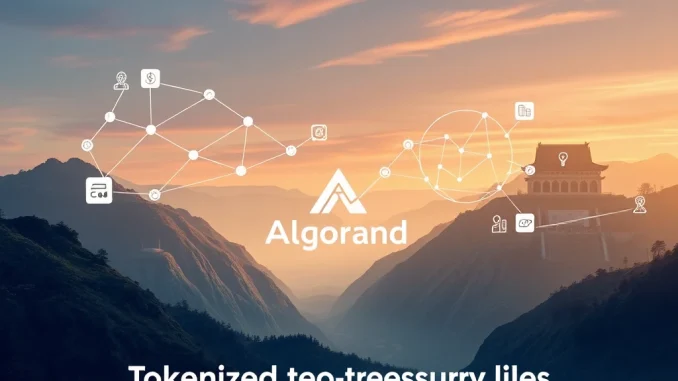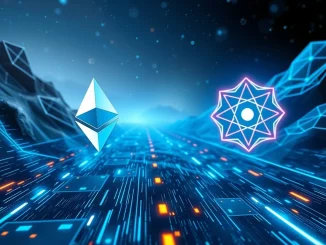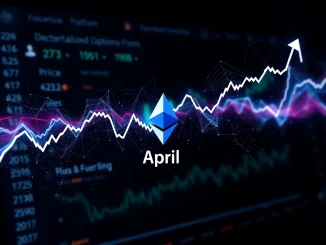
The world of decentralized finance (DeFi) is constantly evolving, seeking to bridge the gap between traditional financial assets and the efficiency of blockchain technology. A significant development in this space is the introduction of Tokenized US Treasury bills, bringing the stability and yield of government debt onto the blockchain. This move opens up new possibilities for investors and liquidity providers within the crypto ecosystem. Let’s dive into how Midas is leading this charge on the Algorand network.
Bridging Worlds: Midas Introduces mTBILL on Algorand
Midas, a platform dedicated to internet-native investing solutions, recently made waves with a key announcement: the launch of mTBILL on the Algorand blockchain. Announced via their official X account, mTBILL represents a tokenized certificate designed to track short-term U.S. Treasury ETFs. This initiative is a concrete step in integrating traditional finance (TradFi) assets into the decentralized finance landscape, offering crypto participants access to a historically stable asset class without leaving the blockchain environment.
The integration of Crypto Treasury Bills onto a blockchain like Algorand is particularly noteworthy. It leverages the inherent benefits of blockchain – transparency, efficiency, and fractional ownership – to make an asset typically accessed through traditional brokerage accounts available to a wider, digitally-native audience. This move by Midas signifies growing confidence in blockchain technology as a viable infrastructure for managing and trading complex financial instruments.
Why Algorand? Exploring Algorand Tokenization Capabilities
Midas’s choice of Algorand as the underlying blockchain for mTBILL is strategic. Algorand is known for its Pure Proof-of-Stake consensus mechanism, which offers high transaction throughput, low costs, and fast finality. These technical attributes are crucial for handling financial applications that require speed and efficiency. The network’s focus on security and its architecture designed to support complex financial primitives make it a suitable platform for real-world asset (RWA) tokenization initiatives like mTBILL.
Algorand Tokenization allows for the creation of various digital assets, from simple tokens to complex securities. Midas is utilizing Algorand’s capabilities to represent ownership or exposure to traditional assets digitally. This process involves packaging the traditional asset (or an instrument tracking it, like an ETF) into a token that can be easily transferred, managed, and integrated with other DeFi protocols on the Algorand network.
Real-World Application: The First Atomic Swap
Demonstrating the practical utility of mTBILL on Algorand, the article highlights a significant event: the first atomic swap involving mTBILLs. According to a report by Cointelegraph, a third party executed this swap on May 27, exchanging 2 million USDC stablecoins directly for mTBILLs on the Algorand network. Atomic swaps are peer-to-peer exchanges of different cryptocurrencies or tokens without the need for a trusted third party, relying on smart contracts to ensure both sides of the trade are executed simultaneously or not at all.
This successful atomic swap is a powerful validation of the mTBILL implementation and Algorand’s infrastructure. It showcases:
- Liquidity: The ability to exchange a widely used stablecoin (USDC) directly for mTBILLs.
- Efficiency: Transactions settling directly on the blockchain without intermediaries.
- Interoperability: mTBILL’s compatibility with other tokens and protocols on Algorand.
- Trustlessness: The swap mechanism ensures fairness for both parties.
Such transactions are vital for building a robust Algorand DeFi ecosystem, providing clear examples of how tokenized traditional assets can function within decentralized financial applications.
What Does This Mean for Algorand DeFi and Beyond?
The launch of Midas mTBILL is more than just a new token; it represents a trend with significant implications for the future of finance:
Democratizing Access
Traditionally, investing in U.S. Treasury bills, especially in smaller denominations or with easy liquidity, could be challenging for global investors or those outside traditional financial systems. Tokenization lowers these barriers, potentially allowing fractional ownership and easier access for anyone with an internet connection and an Algorand wallet.
Enhancing DeFi Portfolios
DeFi users often seek yield, but the volatility of native crypto assets can be a concern. Tokenized Treasuries offer a potentially lower-volatility asset that can provide yield, serving as a diversification tool or a stable store of value within a DeFi portfolio. This could attract more risk-averse capital into the DeFi space.
Increasing Liquidity
By bringing traditional assets onto the blockchain, Midas helps unlock new sources of liquidity. Tokenized assets can be used as collateral in lending protocols, traded on decentralized exchanges, or integrated into various DeFi strategies, increasing capital efficiency.
Setting a Precedent for RWA Tokenization
The success of mTBILL could pave the way for tokenizing other real-world assets, such as real estate, commodities, or private equity. This expands the potential use cases for blockchain technology far beyond native cryptocurrencies and into the vast market of global assets.
Challenges and Considerations
While the potential is immense, challenges remain. Regulatory clarity around tokenized securities is still evolving in many jurisdictions. Ensuring the underlying assets (the Treasury ETFs) are securely managed and that the token accurately reflects their value requires robust legal and technical frameworks. Smart contract risk is also a factor, as vulnerabilities could impact the token’s integrity.
Looking Ahead: The Future of Tokenized Assets
The launch of Midas’s mTBILL on Algorand is a compelling example of the ongoing convergence between traditional finance and decentralized technology. As more high-quality, stable assets like U.S. Treasuries become available on the blockchain through initiatives like this, the appeal and utility of DeFi platforms are set to grow. This development not only validates Algorand’s capabilities for complex financial applications but also signals a maturing DeFi ecosystem ready to incorporate a broader range of assets.
Summary
Midas’s introduction of mTBILL on Algorand marks a significant milestone in the Algorand DeFi space and the broader tokenization movement. By offering a tokenized certificate tracking U.S. Treasury ETFs, Midas is providing a pathway for crypto investors to access stable, yield-bearing traditional assets on the blockchain. The successful execution of the first atomic swap demonstrates the practical functionality and potential for liquidity. This development underscores the growing importance of Tokenized US Treasury bills and the role of platforms like Algorand in building the infrastructure for the future of finance, where traditional and decentralized assets coexist and interact seamlessly.



